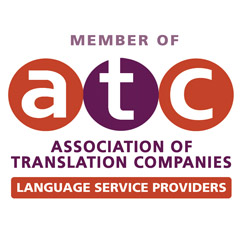Translation plays a crucial role in communication as our world becomes more connected. It allows individuals, businesses, and governments to bridge language barriers and reach wider audiences. But, all translations aren’t the same. Depending on the context, different types of translation may be more suitable for specific needs. In this article, we’ll explore the various types of translation and help you determine which one fits your requirements best.
Literal Translation
One of the most common types of translation is the literal translation. As the name suggests, it involves translating text word-for-word without considering nuances or cultural context. When translating, it’s important to consider the impact on idiomatic expressions or cultural references. These nuances can be challenging to convey accurately without a deep understading of both languages and cultures involved. Despite its limitations, literal translation can be useful for technical documents or legal texts where accuracy is paramount.
Localization
Localization goes beyond literal translation by adapting content to suit the linguistic, cultural, and regulatory requirements of a specific target audience. It involves not only translating text but also modifying elements such as date formats, currencies, and images to resonate with the local culture. Localization is essential for marketing materials, websites, and software applications aimed at international markets.
Transcreation
Transcreation combines translation with creative adaptation to convey the essence and emotion of a message across different cultures. Unlike literal translation or localization, transcreation prioritizes the impact and effectiveness of the communication over linguistic accuracy. It is commonly used in advertising, branding, and creative content where maintaining the original tone and intent is crucial for engaging the audience.
Machine Translation
Machine translation relies on artificial intelligence algorithms to translate text automatically without human intervention. While machine translation has made significant advancements in recent years, it still struggles with nuances, idiomatic expressions, and context-dependent meanings. However, for simple and repetitive tasks, such as translating large volumes of text or providing instant translations in chat applications, machine translation can be a cost-effective solution.
Interpretation
Interpretation involves orally translating spoken language in real-time. Unlike written translation, which allows time for reflection and research, interpretation requires quick thinking and on-the-spot decision-making. There are two main types of interpretation: consecutive interpretation, where the interpreter speaks after the speaker has finished, and simultaneous interpretation, where the interpreter translates simultaneously as the speaker speaks. Interpretation is essential for conferences, meetings, and diplomatic negotiations.
Things to Keep in Mind When Selecting a Translation Method
When deciding which type of translation best suits your needs, several factors must be taken into account:
Content
Consider the nature of the content you need to translate. Technical documents may require a more literal approach, while marketing materials may benefit from transcreation or localization to resonate with the target audience.
Audience
Understand your target audience and their cultural sensitivities. Localization ensures that your message is not only understood but also well-received by the intended audience.
Purpose
Clarify the purpose of your translation. Are you striving to convey information, convince, or captivate your audience? The purpose of the translation will influence the choice of translation type.
Accuracy
Balance the need for accuracy with other considerations such as cost and time constraints. While human translation is generally more accurate, machine translation may suffice for certain tasks where speed and cost are prioritized.
Budget and Time Constraints
Consider your budget and time constraints when selecting a translation type. Human translation is typically more time-consuming and expensive than machine translation but may be necessary for high-stakes projects where accuracy is paramount.
Conclusion
In conclusion, the choice of the types of translation depends on various factors, including the nature of the content, the target audience, the purpose of the translation, and budget and time constraints. Whether you opt for literal translation, localization, transcreation, machine translation, or interpretation, it’s essential to choose the approach that best aligns with your communication goals and audience expectations.




